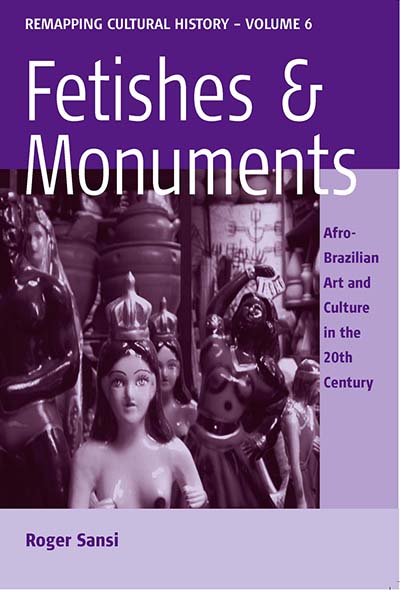Using Brazil’s Racial Continuum to Examine the Short-Term Effects of Affirmative Action in Higher EducationPosted in Articles, Brazil, Caribbean/Latin America, Economics, Media Archive, Politics/Public Policy on 2012-06-22 03:05Z by Steven |
The Journal of Human Resources
Volume 47, Number 3 (Summer 2012)
pages 754-784
Andrew M. Francis, Assistant Professor of Economics
Emory University
Maria Tannuri-Pianto, Professor of Economics
University of Brasilia
In 2004, the University of Brasilia established racial quotas. We find that quotas raised the proportion of black students, and that displacing applicants were from lower socioeconomic status families than displaced applicants. The evidence suggests that racial quotas did not reduce the preuniversity effort of applicants or students. Additionally, there may have been modest racial disparities in college academic performance among students in selective departments, though the policy did not impact these. The findings also suggest that racial quotas induced some individuals to misrepresent their racial identity but inspired other individuals, especially the darkest-skinned, to consider themselves black.
…Theoretical research explores the relationship between preferences in admissions and preuniversity investments (Fryer and Loury 2005a; Fryer, Loury, and Yuret 2008; Holzer and Neumark 2000). Changes in admissions standards might relocate some individuals who otherwise would have had little chance of selection to the margin of selection, thereby inspiring effort. Alternatively, changes in admissions standards might relocate some individuals who otherwise would have been at the margin of selection to an intra-marginal position, thus reducing effort. Essentially, these studies maintain that affirmative action has a theoretically ambiguous effect on effort. This is largely an open question empirically. Ferman and Assunção (2005) use data from Brazil to study the issue. They find that black secondary school students who resided in states with a university with racial quotas had lower scores on a proficiency exam, which they argue indicates that racial quotas lowered effort. Nevertheless, Ferman and Assunção (2005) are unable to identify which students applied to college and which did not. The estimates are rather large given that the average black secondary school student would have had only a small chance of admission. Moreover, self-reported racial identity may be correlated with the adoption of quotas making the results challenging to interpret. This paper aims to build on this work by focusing on applicants and students, employing multiple measures of effort, and using both selfreported and non-self-reported race/skin tone.
Second, this paper contributes to the literature on race and skin shade. A number of papers demonstrate the significance of skin tone—beyond the influence of race—in education, employment, and family (Bodenhorn 2006; Goldsmith, Hamilton, and Darity 2006, 2007; Hersch 2006; Rangel 2007). For example, using survey data from the US, Goldsmith, Hamilton, and Darity (2007) find evidence consistent with the notion that the interracial and intraracial wage gap increases as the skin tone of the black worker darkens. Analogously, Hersch (2006) finds evidence that black Americans with lighter skin tone tend to have higher educational attainment than those with darker skin tone. Allowing the possibility that the policy might impact applicants and students of different skin tone in different ways, this paper estimates separate effects by selfreported race/skin tone (branco, pardo, preto) and by skin tone quintile derived from photo ratings.
Lastly, this paper contributes to the literature on identity. A growing body of literature analyzes the construction of identity and the role of identity in behavior (Akerlof and Kranton 2000, 2002; Austen-Smith and Fryer 2005; Darity, Dietrich, and Hamilton 2005; Darity, Mason, and Stewart 2006; Francis 2008; Fryer et al. 2008; Golash-Boza and Darity 2008; Ruebeck, Averett, and Bodenhorn 2009). To explain a wide range of behaviors and outcomes, Akerlof and Kranton (2000) propose a model where utility is a function of identity, the actions taken by the individual, and the actions taken by others. Darity, Mason, and Stewart (2006) develop a game theoretic model to study the relationship between racial identity formation and interracial disparities in outcomes. Exploring the construction of identity empirically, Darity, Dietrich, and Hamilton (2005) report that despite high African-descended population shares in some Latin American countries, Latinos living in the US largely demonstrate a preference for selfidentifying as white and an aversion to self-identifying as black. They emphasize that racial selfidentification involves choice and suggest that future research on race and social outcomes treat race as an endogenous variable. Theories of identity are complex and challenging to test. This paper is one of the few to study the construction of racial identity in the context of a relatively simple policy change. Isolating one dimension of the dynamic forces that shape identity, this paper offers evidence that racial identity may respond to the incentives created by an affirmative action policy…
Read or purchase the article here.

